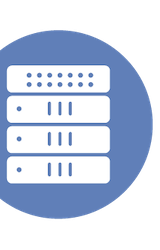While the cloud has its advantages, the notion of on-premises infrastructure regaining its appeal cannot be ignored, as SoftIron emphasizes at Cloud Field Day 19 with their HyperCloud solution. SoftIron’s product promises a true private cloud experience with a focus on simplification and fully integrated hardware and software, designed and manufactured in-house, catering especially to heavily regulated sectors. If you’re evaluating a transition to or revitalization of your on-premises environment, HyperCloud might just offer that seamless, tear-free operability and management you’ve been seeking, melding the advantages of both on-prem and public cloud paradigms. Read more in this article by Field Day delegate Matt Allford.
Kubernetes With Platform9’s Elastic Machine Pool
Platform9’s Elastic Machine Pool (EMP) for AWS addresses the critical issue of EKS cluster underutilization, offering Kubernetes operations enhanced efficiency and cost-effectiveness. By dynamically rebalancing resources and leveraging advanced virtualization, EMP can potentially cut AWS costs in half for EKS users, presenting a considerable advantage for both DevOps and #FinOps teams. Beyond the cost benefits, EMP’s intelligent resource management promotes operational efficiency, allowing teams to devote more time to innovation instead of the manual oversight of cloud resources, according to Jon Myer.
The Dell Alternative to Cloud
In this LinkedIn Pulse article, Joep Piscaer analyzes Dell Technologies’ multifaceted approach to multi-cloud, which includes APEX Block Storage—a software-defined, mature storage solution that extends on-prem software to cloud providers, boosting performance and resilience—and the APEX Cloud Platform, a standardized on-prem hardware and software package that integrates cloud features and operations into Dell’s ecosystem. Piscaer commends Dell’s strategy of not directly competing with cloud service giants but rather expanding its ecosystem within the cloud and enriching the on-premises infrastructure with cloud-like functionalities, providing significant value to its existing customer base.
SoftIron – A HyperCloud That Is Not Your Typical HCI
Camberley Bates describes SoftIron’s distinctive approach within the Hybrid Cloud Infrastructure market, highlighting its appeal to sectors with zero-trust and high-security requirements. SoftIron stands out by manufacturing its own hardware for compute, network, and storage in the US and Australia, with a software foundation geared towards high-security standards. Their systems can scale significantly beyond the usual limitations of HCI, supporting large clusters with high performance, even in HPC or image processing contexts. The article notes SoftIron’s unique architecture, including a stateless device setup and control plane integration in top of rack networking nodes, and mentions the intention to further investigate their data management and system interface.
Auto-Optimizing EKS Utilization With New Elastic Machine Pool From Platform9
Platform9’s Elastic Machine Pool (EMP) is an innovative response to the costly challenges of over-provisioning in the cloud, introduced at the Cloud Field Day event to enhance EKS deployment efficiency. EMP expertly tackles the pervasive issue of low utilization rates in Kubernetes environments, promising to virtually halve EKS costs while maintaining application SLAs by optimizing EKS cluster utilization via an intelligent, hands-off approach. Platform9’s solution signifies a major step towards cost-effective cloud management, ensuring resource optimization without compromising on performance, with aspirations to extend this savvy tool beyond AWS EKS, offering broad appeal to enterprises looking to streamline their cloud operations.
Saving Money in EKS Is a Good Start
Cloud elasticity, allowing for scaling out and in, can lead to cost inefficiency when resources remain underutilized, a situation exacerbated in Kubernetes environments with studies citing overprovisioning as a significant issue. Ned Bellavance discusses Platform9’s Elastic Machine Pool (EMP), which seeks to address excessive resource allocation in EKS by optimizing node placement and memory on AWS EC2 instances, potentially leading to substantial cost savings. However, while EMP is a clever intermediary fix, the underlying challenge of workload right-sizing and application team behavior remains, signifying the need for a more profound, long-term solution.
Platform Engineering & FinOps Converge
Platform9 stands at the forefront of innovative Kubernetes management, blending platform engineering expertise with FinOps principles to tackle over-provisioning and optimize resource allocation. Their Managed Kubernetes service revolutionizes deployment and operational management, enhancing both operational efficiency and financial optimization for enterprises. With the introduction of Elastic Machine Pool—targeting AWS EKS clusters—Platform9 commitments to substantial cost savings and improved compute utilization, evidencing a future where technical prowess meets financial prudence in cloud infrastructure management. Read more in this analyst note from The Futurum Group by Steven Dickens and Camberley Bates.
Doing Data Analytics Acceleration in Hardware With NeuroBlade
NeuroBlade sets its sights on becoming the NVIDIA of Data, showcasing its commitment to hardware-based solutions with its SQL Processing Unit (SPU) at Cloud Field Day. In this LinkedIn Pulse article, Joep Piscaer takes a look at the SPU, which is engineered to overcome the limitations of general-purpose CPUs and GPUs in data analytics by offering 30x acceleration at a fraction of the cost and power consumption, without the need to rewrite SQL queries. While NeuroBlade has already made strides with hyper-scale clients and OEM integrations, like with Dell, the potential for broader market reach through collaborations with cloud-based data analytics services remains an exciting prospect for the future.
Behold, the SQL Processing Unit (SPU)
The NeuroBlade SPU is a groundbreaking piece of hardware designed to plug directly into servers, offering a 30x improvement in processing analytical queries, which Thomas LaRock thinks could be a game-changer for data-intensive companies. As generative AI and Large Language Models democratize data access, NeuroBlade comes at a critical juncture, addressing the impending surge in data processing demands with minimal impact on current infrastructure and methods. With the potential to massively reduce hardware needs and carbon footprint, this innovative solution is poised to be a coveted asset, not just for individual enterprises but also potentially for major cloud service providers as they navigate the explosion of data in the coming years.
At the APEX: Dell’s Vision for Multi-Cloud Platform Storage and Configuration
Navigating the complexities of managing a modern multi-cloud environment is a formidable challenge, demanding meticulous oversight of components and rigorous lifecycle management to maintain cluster health. Dell’s APEX Cloud Platform (ACP) positions itself as a unified management solution for disparate cloud infrastructures, focusing on ease of deployment in both OpenShift and Azure environments, and promoting the synergy of their hardware with APEX Cloud Storage. In this LinkedIn Pulse article, Jim Czuprynski discusses his opinion on the APEX offering.
Is Platform9’s Cost Optimization Worth Its Complexity?
At Cloud Field Day 19, Platform9 introduced their Elastic Machine Pool (EMP), a sophisticated solution dedicated to optimizing cloud costs through a unique utilization of AWS bare metal and a KubeVirt-based virtualization layer for Kubernetes. While EMP can provide significant savings for those with resource over-allocation, it introduces layers of technological complexity that could lead to technical debt, raising the question of whether the cost savings justify the added intricacy. Joep Piscaer elaborates on the delicate balance between addressing organizational inefficiencies with technical solutions, suggesting that while EMP has its merits, a holistic approach to understanding and resolving the root causes behind over-provisioning may yield more sustainable outcomes.
Use This One Weird Trick to Build Your Own Private Cloud
Tracing the evolution of corporate infrastructure, Thomas LaRock spotlights how mainframes gave way to servers, which in turn embraced the transformational shifts to virtualization, then public clouds, and now the emergence of microservices and containers—yet through each phase, the underlying data centers and servers remained indispensable. Despite the allure of public cloud, private clouds persist, driven by factors like security, data sovereignty, performance, and the cost of potential repatriation, which keeps companies from going all-in on cloud solutions. Addressing the complexities of building private clouds, SoftIron unveils their HybridCloud offering—an “in-a-box” private data center solution that affirms its scalability, ease of integration with Azure and AWS, and potential as a maneuver away from challenging licensing models.
HyperCloud: Is This the Next Era of Private Cloud?
With the rise of hyperscalers and the challenges of cloud cost management, HyperCloud by SoftIron offers an intriguing solution, aiming to marry the agility of cloud computing with the control of on-premises infrastructure. In this LinkedIn Pulse article, Jon Myer discusses the HyperCloud ecosystem, which brings a cloud-like experience to private setups, seeking to address the complexity of traditional data centers with a flexible, scalable infrastructure. As someone fascinated by IT’s evolution, HyperCloud’s innovative approach and promise of operational ease and efficiency within a secure on-premises environment might very well define the next era of private cloud.
Introduction to NeuroBlade
At Cloud Field Day 19, NeuroBlade introduced their innovative SPU solution, which joins the ranks of xPUs designed to boost data processing beyond traditional CPU or GPU capabilities. Their SPU, a PCIe bus-inserted hardware accelerator, is integrated through the DAXL API and SDK, showing promise in Presto, with plans to expand to Spark and Clickhouse, touting substantial performance claims of a 30x improvement. NeuroBlade’s pitch is particularly compelling in the big data era, where their technology could drastically cut the number of servers needed for large workloads, signaling a potentially transformative impact on cost, space, and power efficiency in data analytics. Read more in this LinkedIn Pulse article by Camberley Bates of The Futurum Group.
Dell Brings Multicloud Storage to Cloud Field Day
Ken Nalbone’s LinkedIn article details Dell’s unveiling of their APEX Block Storage for Public Cloud at Cloud Field Day 19, a solution aimed at delivering cross-cloud consistent architecture, performance, and management to enterprise customers.
Stop Paying for Resources You Aren’t Using
In this LinkedIn Pulse article, Thomas LaRock advises against over-provisioning cloud resources, comparing it to a rule from a basketball camp: “Take all you can eat. But eat all that you take.” He highlights the common practice of requesting more resources than necessary, leading to wasted resources and higher costs. LaRock introduces Platform9’s Elastic Machine Pool (EMP) as a tool to identify and optimize inefficient Kubernetes deployments, potentially reducing costs by up to 50%. He suggests that managing cloud resources is more of an art than a science and recommends tools like EMP for effective cost optimization, particularly in Kubernetes deployments.
EKS Cost Optimization From Platform9
As Ken Nalbone writes, Platform9 has re-emerged at Cloud Field Day with significant updates to their product suite, emphasizing their commitment to democratizing cloud computing with a focus on private and edge clouds. Their new Elastic Machine Pool (EMP) solution caught the spotlight, tackling the persistent issue of Kubernetes cost optimization, contrasting typical FinOps strategies by targeting both cost-saving and compute optimization. Platform9’s proactive approach, exemplified by EMP’s ability to efficiently scale resources on AWS without disruptions, underscores a pragmatic recognition of the organizational challenges in application optimization and presents a tailored niche in the cloud management market.
Multi-Cloud in 2024
Selecting the right cloud infrastructure—be it multi-cloud, hybrid-cloud, VMs, or bare-metal—hinges on specific workload requirements and the scale of service operations across various regions. This DEV article by Michael Levan delves into multi-cloud strategies, utilizing different clouds for diverse services or regions, and integrates the efficiency of Dell’s APEX storage, which boasts cost savings and multi-cloud capabilities. While Dell APEX offers considerable storage improvements, the decision to switch from standard cloud storage solutions may depend on the scale of the enterprise and specific storage needs.
CFD19 – Going From Ground to Cloud and Back With Dell
Cloud Field Day 19’s second day commenced at Dell’s Executive Briefing Center in Santa Clara, unveiling the multi-cloud orchestration capabilities of Dell’s APEX platform, particularly highlighting APEX Console and Navigator for managing multicloud storage. Dell’s APEX Block Storage offers novel choices for extreme performance and hybrid cloud mobility, either through marketplace procurement or direct purchase options. Important insights emerged around the simplicity of deploying APEX solutions and APEX Cloud Platform’s potential to streamline on-prem “private cloud” operations, demonstrating Dell’s commitment to simplifying cloud-to-ground integration for administrators. Learn more in this article by Field Day delegate Matt Allford.
Accelerating Data Analytics With Neuroblade
NeuroBlade is pushing forward with a novel contribution, the SPU or SQL Processing Unit, which Ned Bellavance learned about at Cloud Field Day. Addressing the data explosion and the limits of current processing hardware, NeuroBlade’s SPU aims to fill a gap neither CPUs nor GPUs can, providing significant performance improvements tailored to SQL queries. Targeting primarily bare-metal deployments, the SPU boasts a 30x performance increase over traditional hardware, potentially offering a transformative advancement in data analytics performance.







